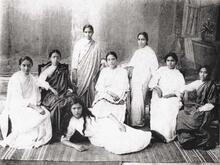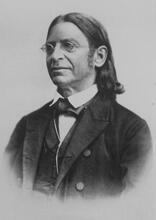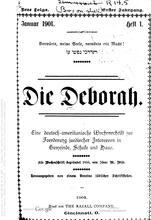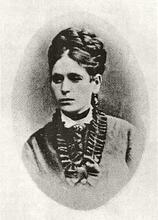Elephantine
The documents found on the Egyptian island of Elephantine in the late nineteenth and early twentieth centuries, which date from the fifth century BCE, extensively feature women. These women are explicitly named and without the qualifiers of their husband or father, as is common in the Bible. Two women illustrate the differing lives of Elephantine women: Mibtahiah, who is extremely wealthy, and Tamet, a handmaiden. The stories of both women show how women were able to inherit property if their spouse or father died and are also able to take half of their husband’s property if they wish to divorce him. These narratives present a society in which women had significant rights, rare for the time.
Discovery and Preservation of the Documents
On the island of Elephantine, opposite Aswan and just below the first cataract in Egypt, several hundred Aramaic papyri and ostraca were discovered between 1893 and 1910. Typically, some of the best finds were made on the antiquities market, and two archives of Jewish families from the fifth century BCE were acquired by purchase. One was bought in 1897 by the American Egyptologist Charles Edwin Wilbour (1833–1896) but was not published until 1953 by Emil Gottlieb Heinrich Kraeling; the other was acquired in 1904 by Sir Robert Ludwig Mond (1867–1938) and Lady William Cecil (Georgina Sophia Pakenham, 1827–1909) and by the Bodleian Library in Oxford and was published shortly thereafter (1906) by Archibald Henry Sayce (1845–1933) and Arthur Ernest Cowley (1861–1931).
The Wilbour papyri, now in the Brooklyn Museum in New York City, contain the family archive of the Temple official Ananiah son of Azariah, covering a period of fifty years, namely, two generations (451–402 BCE). The Mond-Cecil papyri are in the Egyptian Museum in Cairo and together with the Bodleian papyrus constitute the archive of the woman Mibtahiah daughter of Mahseiah, spanning over sixty years and covering three generations (471–410 BCE).
In the wake of the publication of the Mibtahiah archive, German and French teams set out to excavate on the island of Elephantine. The French discovered several hundred ostraca but only a dozen or so have so far been published. Under the direction of Otto Rubensohn (1867–1964), the Germans discovered ostraca and papyri, particularly in their second season (1907), and these were promptly published by Eduard Sachau (1845–1930) in 1911. The finds, which were divided between the Egyptian Museum in Cairo and the Staatliche Museen in Berlin, the sponsor of the expedition, included letters, lists, legal texts, a literary piece (The Words of Ahiqar), and the Bisitun inscription of Darius I.
In 1923 Arthur Ernest Cowley collected all the then-known Aramaic texts in a small volume that remained the standard source for some thirty years. In the years 1986–1999 Bezalel Porten and Ada Yardeni issued, in four volumes, Textbook of Aramaic Documents from Ancient Egypt Newly Copied, Edited and Translated into Hebrew and English (TAD A–D; All documents discussed herein are cited according to this source).
Jews in Elephantine and Aswan
The Elephantine documents reveal the presence on the island of Elephantine and on the mainland (Aswan) of a Jewish military colony serving Persian interests. They illustrate in detail what life was like on this southern border of the Persian Empire, which ruled “from India to Nubia” (Est. 1:1). If the Jews exiled to Babylonia had any thoughts of erecting a temple in their midst, they were deterred from doing so by the prophet Ezekiel (11:16), who proclaimed in God’s name, “I have indeed removed them far among the nations and have scattered them among the countries, and I have become to them a diminished sanctity (i.e. a mini-sanctuary) in the countries where they have gone.”
However, the Jews who made their way to Elephantine did erect a magnificent Temple, with cedar roof and five stone gateways, probably taking their cue from the prophet Isaiah (19:19), who prophesied: “In that day, there shall be an altar to the Lord inside the land of Egypt and a pillar to the Lord at its border.” The Elephantine Jews observed the Sabbath, celebrated A seven-day festival to commemorate the Exodus from Egypt (eight days outside Israel) beginning on the 15th day of the Hebrew month of Nissan. Also called the "Festival of Mazzot"; the "Festival of Spring"; Pesah.Passover, and gave their children Hebrew names. They shared the tight space in the fortress of Elephantine with the temple of the Egyptian god Khnum, and in the year 410 the priests of that deity connived with the local Persian governor, Vidranga, to destroy the Jewish Temple (TAD A4.7–8). The Jews mourned its destruction, prayed for the downfall of the perpetrators, and wrote to their co-religionists in Jerusalem and Samaria for intercession with the Persian authorities in Egypt to have their Temple restored. A limited recommendation was finally forthcoming (TAD A4.9–10) and both textual and archeological evidence suggest that the Temple was indeed rebuilt.
Women in the Documents
One of the most striking features of the Elephantine papyri is the prominent role that women play. It is no exaggeration to say that they are everywhere. They mourned the destruction of the Temple together with their menfolk and in a petition to the governor of Yehud (Judah), the head of the Elephantine community, Jedaniah son of Gemariah, wrote, “Our wives are made as widow(s)” (TAD A4.7:15, 20). Should the governor Bagavahya successfully bring about the restoration of the Elephantine Temple, “We shall pray for you at all times—we, and our wives, and our children, and all the Jews who are here” (TAD A4.7:26–27).
On June 1, 400 BCE, a collection was taken up for the God YHW, as the Jewish deity was called at Elephantine, and 128 contributors gave two shekels each (TAD C3.15). Every name and contribution was duly recorded in a long list that ran to seven columns. The first column opens with a female name, Meshullemeth daughter of Gemariah son of Mahseiah, and contains another half dozen or so female names. Two female names appear at the end of Column four; all of Column five and almost all of Column six are taken up with female names.
Almost a third of the contributors were women. Their names enhance our knowledge of female onomastica and include such names as Abihi (“she is my Father,” TAD C3.15:90); Abiosher (“my father is wealth,” TAD C3.15:104); Jahmol (“may the Lord have mercy,” TAD C3.15:89. 97); Jehohen (“the Lord is grace,” TAD C3.15:92, 101); Jehotal (“the Lord is dew,” TAD C3.15:103); Jehoeli (“the Lord is exalted, TAD C3.15:105); Jehoshama (“the Lord heard,” TAD C3.15:87, 98–99, 117); Menahemeth (“comforter,” TAD C3.15:81, 108); and Nehebeth (“beloved,” TAD C3.15:22, 91, 96, 107). While a married woman in the Bible was regularly known by the name of her husband, e.g., Deborah wife of Lapidoth (Ju. 4:4), Huldah wife of Shallum (2 Ki. 22:14), these women, as well as the ones mentioned in the contracts, are referred to by their fathers’ names, e.g., Hazzul daughter of Hodaviah (TAD C3.15:112). Even if we assume that they were all unmarried, their representation as independent contributors is certainly noteworthy.
The Elephantine contracts span the fifth century BCE, the earliest having been drawn up on October 22, 495 BCE (TAD B5.1) and the latest on June 21, 400 BCE (TAD B4.6); both concern women. The first document records a voluntary exchange between the parties of half of their respective, independently inherited shares, probably realty, and testifies to the right of women to inherit, hold, and exchange property solely in their own names.
The second document is an IOU, apparently following a divorce, in which the man pledges to pay the woman, within five weeks, the balance of her document of wifehood (a sum of two shekels). As in any other debt, failure to pay would render all of his property liable to seizure and held as security until payment is made. A third document, from the middle of the century (TAD B3.1 [December 13, 456 BCE]), records a loan for a year of four shekels at five percent monthly interest given to a woman by a prosperous slaveholder. The terms of the loan illustrate that a woman could freely borrow money at interest from another Jew and be expected to be in possession of realty and chattels that could be seized in the event of non-payment.
Mibtahiah, Tamet, and Jehoishma
In addition to these three documents where women are the sole or main parties, there are two family archives in which women figure prominently. The woman best known at Elephantine was Mibtahiah (“the Lord is trust”), daughter of Mahseiah (“the Lord is refuge”). Her name reveals an awareness of the word sequence hsh bth, which occurs in several psalms (62:8–9, 91:2, 118:8–9). In 459, she married Jezaniah son of Uriah who had a house bordering on one owned by Mahseiah.
In a document running to thirty-four lines, the father bequeathed this house to his daughter (“in my life and at my death”) (TAD B2.3) and in a parallel document gave her husband rights of usufruct therein (TAD B2.4). In a state of disrepair, the house was probably held by the father for the occasion of his daughter’s marriage and the terms of the bequest make it clear that it was to be treated as an estate perpetuated within the family or among designated heirs, corresponding to Babylonian mul’gu and Talmudic melog.
Four more documents reveal the extent of Mibtahiah’s wealth. Apparently Jezaniah died leaving her childless and in 449 BCE she married an Egyptian builder, Eshor son of Djeho (TAD B2.6), subsequently known by the Hebrew name Nathan (TAD B2.10:3, 2.11:2). Her dowry was worth sixty-five and a half shekels. In 446 BCE she received a house from her father in return for unspecified goods worth fifty shekels which she had provided him when he was engarrisoned (TAD B2.7).
By 416 BCE, Mibtahiah was dead, and her sons were in possession of the house she inherited from Jezaniah (TAD B2.10). The sons, named respectively after Mibtahiah’s father Mahseiah and her grandfather Jedaniah, in 410 BCE divided among themselves two of their mother’s four Egyptian slaves, holding the remaining two, mother and child, in joint possession (TAD B2.11). In sum, the twice-married Mibtahiah had acquired three houses and four slaves, in addition to personal objects such as clothing and toiletries.
At the other end of the social ladder was the Egyptian handmaiden Tamet, married to a minor Temple official, Ananiah (Anani) son of Azariah. Her document of wifehood, drawn up between the master Meshullam son of Zaccur and the groom in the same year as that of Mibtahiah with Eshor (449 BCE), displays erasures, supralinear and final additions that indicate a much-negotiated arrangement whose aim was to enhance the status of the bride vis-à-vis her master. Even so, her dowry was worth but a third of that of Mibtahiah. What characterizes this contract as a post-nuptial agreement is the presence of a son, Pilti (Pelatiah), whom Tamet’s master may not reclaim unless Anani expels Tamet. Any such attempt would cost him fifty shekels, in essence elevating the child’s status from a master’s slave to a couple’s child.
After Tamet bore Ananiah a second child, the girl Jehoishma, Anani bestowed upon her rights of usufruct to a room in his house, which he had acquired three years earlier as a piece of abandoned property (TAD B3.4–5). In his old age and over twenty years after Tamet’s marriage, Meshullam issued a deed of testamentary manumission for mother and daughter: “You are released from the shade to the sun, you are released to God,” in return for which the pair pledged to serve Meshullam and his son Zaccur as “a son or daughter supports his father” (TAD B3.6). Manumission was strengthened by adoption so that when Jehoishma was married in 420 BCE, her adoptive brother Zaccur handsomely endowed her with personal possessions worth seventy-eight and one-eighth shekels (TAD B3.8).
Sixteen years later (404 BCE), Anani wrote a second deed for his daughter, this time granting her title upon his death in exchange for old-age support (TAD B3.10), thereby providing a consideration and strengthening her title in the face of potential claims by other heirs. Barely two years later (402 BCE) Anani made over the property “from this day forever” and designated it an “after-gift” to her document of wifehood (TAD B3.11). By the end of 402 BCE, Ananiah and Tamet sold the remainder of their house to their son-in-law, also named Anani (son of Haggai) (TAD B3.12).
Significance of Women in the Documents
These two family archives present us with women at either end of the social and economic spectrum. One owns several houses and several slaves; the other is herself a slave and yet may possess title to a room in her husband’s house. Her daughter, emancipated and adopted, could bring in a dowry of greater value than that possessed by the owner of slaves.
The common ground among all three women was the “document of wifehood” (spr ’ntw), the so-called marriage contract. No matter what their social status, all three women had essentially the same death and repudiation clauses. Should either spouse die, the couple being childless, the deceased’s property would fall to the survivor in one fashion or another (TAD B2.6:17–22; B3.3:10–13, 3.8:28–36). Of even greater significance is the fact that in the matter of repudiation, there existed virtual equality of the spouses.
Either party could stand up in an assembly and proclaim, “I hate my husband/wife.” Jehoishma’s contract is the most elaborate: “And if Jeh[oi]shm[a] hate her husband Ananiah and say to him, ‘I hate you, I will not be your wife,’ silver of hatred is on her head; her mohar will be forfeit. She shall place upon the balance scale and give her [hu]sband Anani silver, seven [and a half] shekels, and go forth from him with the rest of her money and her goods and her property. … He shall give (them) to her on [one] day at one stroke and she may go to her father’s house” (TAD B3.8:21–28).
Rich or poor; free, slave, or emancipated; of Jewish or Egyptian birth, the woman in the Jewish community of Elephantine had rights of repudiation equal to those of her husband. Although the Elephantine woman may not have had the right to witness documents, the many documents in which she appears are ample witness of the extensive rights she enjoyed five hundred years before the common era.
Cowley, Arthur Ernest. Aramaic Papyri of the Fifth Century b.c. Oxford: 1923.
Geller, M. J. “New Sources for the Origins of Rabbinic Ketubah.” HUCA 49 (1978): 228, 237–238.
Hallo, W., and K L. Younger, eds. The Context of Scripture (=COS 3), vol. 3. Leiden: 2002.
Kraeling, Emil G. The Brooklyn Museum Aramaic Papyri. New Haven: 1953.
Levine, B. Mūlugu/Melug: The Origins of a Talmudic Legal Institution.” JAOS 88 (1968): 274–277.
von Pilgrim, C. “Der Tempel des Jahwe.” MDAIK 5 (1999): 145–145.
Porten, Bezalel. Elephantine Papyri In English (=EPE). Leiden: 1996.
Idem. “Aramaic Papyri and Parchments: A New Look.” Biblical Archeologist 42 (1979): 85–88.
Idem. “Fragmentary Aramaic Deeds of Obligation and Conveyance: New Collations and Restorations.” Journal of Near Eastern Studies 48 (1989): 164–167.
Porten, Bezalel, and H. Z. Szubin. “An Aramaic Deed of Bequest.” In Community and Culture: Essays In Jewish Studies In Honor of the Ninetieth Anniversary of the Founding of Gratz College, edited by N. Waldman, 179–192. Philadelphia: 1987.
Porten, Bezalel and H. Z. Szubin. “A Dowry Addendum (Kraeling 10).” Journal of the American Oriental Society 107 (1987): 231–238.
Porten, Bezalel, and H.Z. Szubin, “The Status of the Handmaiden Tamet: A New Interpretation of Kraeling 2 (TAD B3.3).” Israel Law Review 29 (1995): 43–64.
Porten, Bezalel, and Ada Yardeni. Textbook of Aramaic Documents from Ancient Egypt Newly Copied, Edited and Translated Into Hebrew and English (TAD A–D). Four volumes. Jerusalem: 1986–1999.
Sachau, Eduard. Aramäische Papyrus und Ostraka. Leipzig: 1911.
Szubin, H. Z. and B. Porten. “Testamentary Succession at Elephantine.” Bulletin of the American Schools of Oriental Research 252 (1983): 39–41.
Szubin, H. Z., and Bezalel Porten. “The Status of a Repudiated Spouse: A New Interpretation of Kraeling 7 (TAD Bs. 8).” Israel Law Review 35 (2001): 46–78.
Sayee, Archibald Henry, and Arthur Ernest Cowley. Aramaic Papyri Discovered at Aswan. London: 1906.













